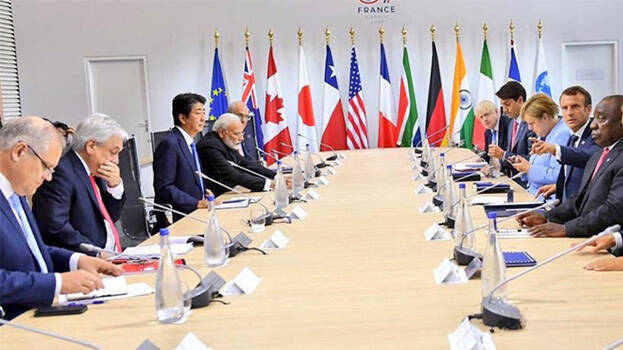

The International Monetary Fund warns us of a crucial post-corona global economic depression and that the European Union will be shaken to its roots. However, there is also a happy hint that the Indian economy will not only survive such a slump but will also make some progress. Even though the corona pandemic is expected to shatter the economic dreams of the entire world and change the course of history from now on, India will soar over all that, it is predicted. It is in this background that we should look at the causes and consequences of how, urged by the US, the G-7 is seriously thinking of encompassing four more countries including India to become G-11, a new international group. As of now, apart from the US, the G-7 refers to the UK, Canada, France, Germany, Italy and Japan. Originally it was G-8 till Russia left it and now Russia will be back in the fold along with North Korea, Australia and India, most probably in the next summit of the G-7 which is about to be held in the US. It is to this meet that Trump has invited Narendra Modi and reportedly Modi has accepted the invitation. This will open up new developmental avenues for India in the post-corona pandemic times. The G-7 is supposed to be holding up such values like freedom, human rights, democracy, law and order, prosperity and sustainable development very highly and it is the second most influential international committee after the UN Security Council. As India gains entry into this group, its voice will be heard more distinctly and consequently it will be a powerful and influential nation on a global scale.
Six nations had come together way back in 1975 to discuss and compare notes regarding the global economic crises of those days. Next year Canada too joined the group making it G-7. Ministers and statesmen of these countries regularly meet and discuss topics of common interest. Timely topics like climate change, energy policies, HIV and other pandemics and international peace and security were discussed in the previous summits. Though dissent has been a part of such discussions, solutions and better equations which were aplenty have paved the way for futuristic visions and optimistic ground work. Each of these summits has initiated much interest and public demonstrations too. Even when besmeared by censure, from the press as well as from the public, each summit has engendered creative and proactive ideas and solutions. The last summit discussed a motion regarding economic inequality. The initiation of a global fund in a G-7 summit to combat aids, malaria, and tuberculosis was helpful not just for themselves but for the whole world. The 2016 Paris Climate Agreement was also motivated by the G-7 consensus on actions to contain climate change. Economists are of the opinion that by 2050, China, India and Brazil might overtake the G-7 in economic growth. It also opined that the G-7 does not reflect an exact political and economic image of the present world. As G-7 becomes G-11, as Trump envisions it to be, this will be remedied. The fact that China is not invited to join the G-7 might lead to India's added influence in Asia. India's inclusion in the group might also gain support for India's claims regarding the border disputes with China in Ladakh. When the Indian Prime Minister Narendra Modi took part in the G-7 as an invitee, he had brought to the notice of the group the various measures adopted by India in water conservation and plastic pollution. He had also brought to the attention of the world the actions taken by India to control the depletion of biodiversity, climate change and ocean pollution.
It is generally seen that it is to India's credit that she has been invited to be part of the G-7. The diplomatic policies adopted by India is in sync with the American President's opinion that India is a nation of primacy in the post-corona world. This will be of much benefit to the industrial-labour-expatriate communities and workforce.